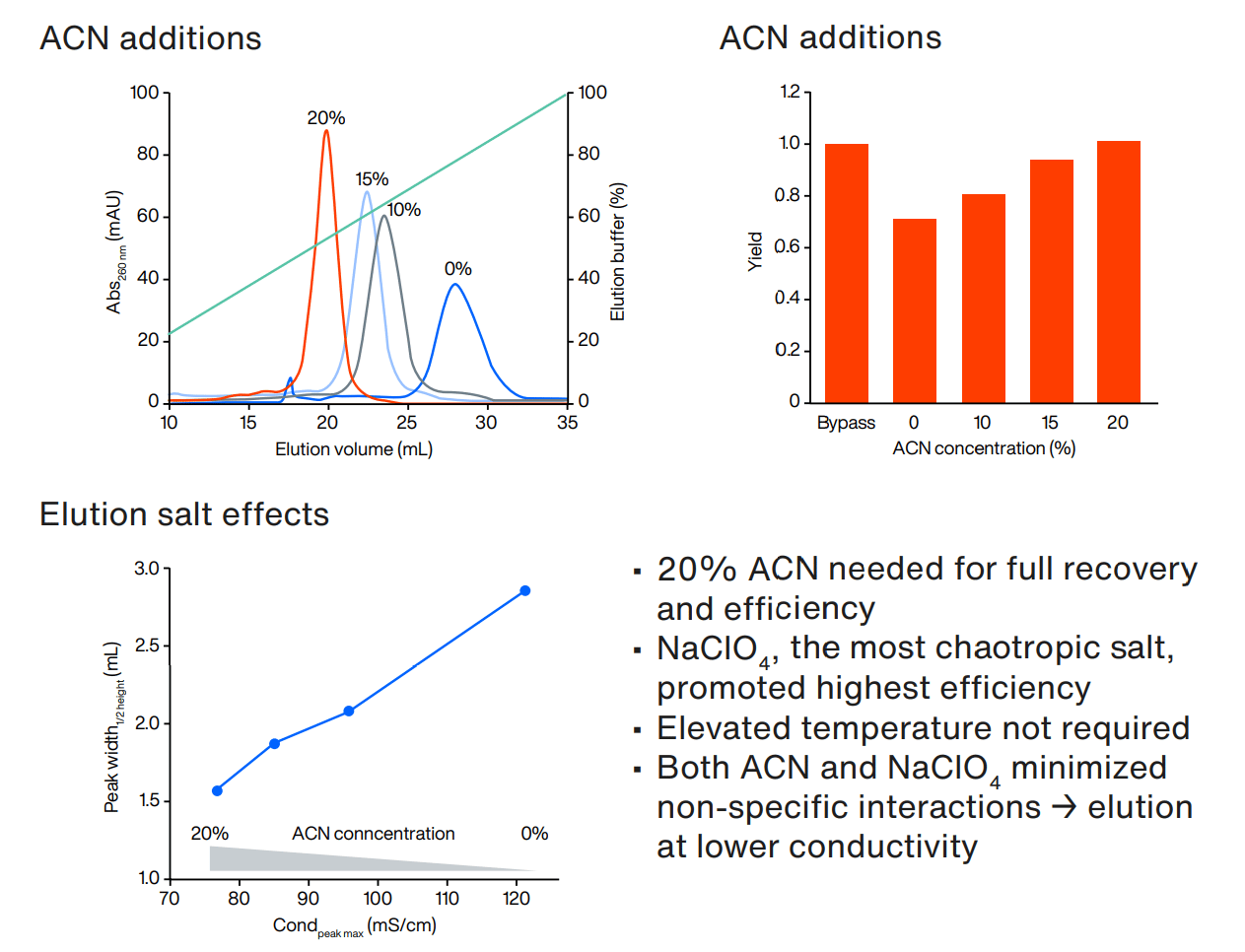Introduction
Since oligonucleotides (ONs) are mainly synthetically produced by solid-phase synthesis it is easy to modify them during the synthesis process. The most commonly used modification, phosphorothioate (PS) linkages in which the oxygen atom is replaced by a sulfur atom in the backbone, increases the in vivo stability by reducing the risk of decay by nucleases. But it also makes the downstream purification of oligonucleotides more challenging.
PO oligonucleotides
Native ONs, i.e. non-modified phosphorodiester ON (PO), can be purified using normal buffers without the requirements of any additives (e.g. 20 mM Tris, pH 8 + 1.5 M NaCl).
Narrow peaks → good separation → easy pool collection → purity ≥95% with high yields at most scales
PS oligonucleotides = challenge due to increased hydrophobicity

Considerations for PS oligonucleotides when
purifying with IEX
• Broad peaks due to presence of stereoisomers
and increased hydrophobic properties
• Number of stereoisomers for a sequence
containing n PS linkages = 2nPS

Native 20-mer ONs are relatively easy to purify with standard buffers compared to same PS modified sequence → broad peaks obtained for PS ONs.
Chaotropic factors
Chaotropic agents (complex-breaking agents) are needed to prevent and reduce the hydrophobic complex formations within or between the PS ONs in ion exchange chromatography (IEX) purification setups.
chaotropic agents/conditions:
• Higher pH
• Organic modifiers (acetonitrile)
• Elution salts (NaBr and NaClO4)
• Elevated temperature
Screening for optimal IEX running conditions
Sample: 20 nt PS ON
Buffer: 10 mM NaOH (pH 12)
Resin: WorkBeads™ 40Q (45 µm beads)
Parameters tested/included in buffers:
• Organic modifiers: 0-20% acetonitrile (ACN)
• Elution salts of increasing chaotrophy: NaCl - NaBr - NaClO4
• Elevated temperature
Output values in the screening: yield, peak width and conductivity
WorkBeads 40Q - resin with small pore sizes optimal for ON purifications

• Smaller pore sizes → higher available interaction area → higher binding capacities
• More narrow pore size distribution (PSD) → better mass transport → increased purity

→ Optimal conditions: 10 mM NaOH, 20% ACN, + 0.4 M NaClO4 (22°C)
→ Up to 40 mg PS ON can be loaded/mL resin without breakthrough
PS ON purifications
Preparative sample loading, of 20 mg PS ON feed (78% purity)/mL resin.
Aim: Target purity of 95%
Column: WorkBeads 40Q, 6.6 x 50 mm
Binding buffer: 10 mM NaOH, 20% ACN
Elution buffer: 10 mM NaOH, 20% ACN, 0.4 M NaClO4
Gradient: 0-100% elution buffer in 20 CV
Flow rate: 0.45 mL/min (4 min residence time (RT))
.webp?width=1304&height=431&name=7%20(cut%20out).webp)
(A) PS ON elution pattern on AIEX. 20 mg PS ON crude was purified per mL WorkBeads 40Q resin. Elution buffer gradient (green), UV traces 260 nm (blue), and 295 nm (orange). Green boxes represent collected pools. (B) PS ON purity distribution within the crude, and each pool, for the resolved species: FLP (green), n-1 (blue), n-2 (red) and n+1 (grey) using RPC analysis.

• 95% purity at 65% yield (7 mL)
• Larger pools: reduced purity,
increased yield
• A295 facilitates pool collection
Conclusions
• PS ON preparation (20-mer DNA) from solid phase was purified from 78% to 95% at preparative loading scale (yield 65%) using IEX as stand-alone step
• Optimizations of running conditions are essential for PS ON crudes
• Chaotropic additives required, such as ACN and NaClO4
• When chaotropic additives were present, elevated temperature had no effect
bio-works.com
Bio-Works, WorkBeads and GoBio are trademarks of Bio-Works Technologies. All third-party trademarks are the property of their respective owners.
© Bio-Works. All goods and services are sold subject to Bio-Works terms and conditions of sale. Contact your local Bio-Works representative for the most current information.
Bio-Works, Virdings allé 18, 754 50 Uppsala, Sweden. For local office contact information, visit bio-works.com/contact.
PS 40 653 002 BB